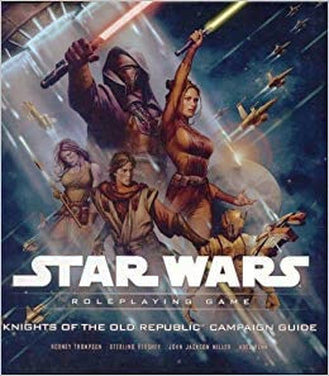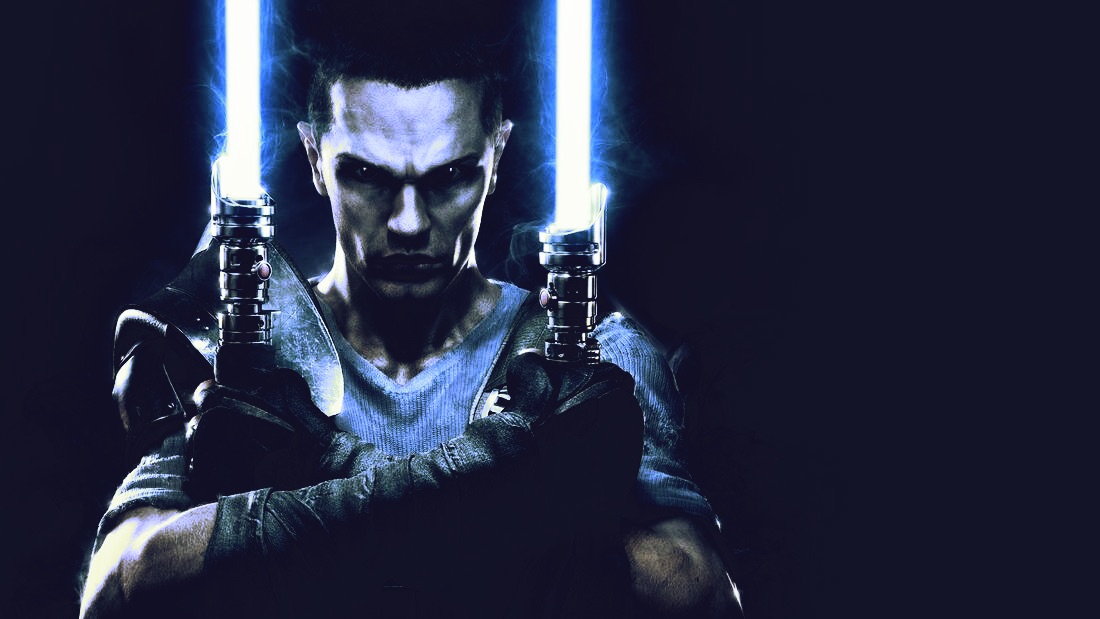|
Hey everyone! I took April off to do some birthday cleaning, figuratively and literally. Those of you that follow me on social media know I just completed an online "garage sale" / 10-year purge recently, and the energy that such an endeavor released has been monumental. It's amazing how much clutter we allow into our lives, and how many things we hold onto that weigh us down. Enough. Is. Enough. I feel lighter, stronger, and more motivated than ever. Here's to my next year. :) It was only just May the 4th, and any nerd worth her salt knows what's up. It seemed a no-brainer for me to run a very special kind of game, and in preparing it, and running it last night, I've made a few key observations on how it's changed over the years, how my style has changed, and how I prefer to run my games in this system. Saga Is The Best Version, don't @ meI've played the original D20 Star Wars (where Jedis are broken beyond reason), the West End variations (very open and creative), and the most recent Age Of Rebellion and all its various extra settings (weird dice and conceptual misalignment, still good, just weird). But what I've always returned to is Saga Edition. Star Wars as a property has a problem when it comes to their tabletop settings and systems. They don't maintain support on older systems, actively discarding and going out of their way to forget they even existed. Everything's out of print (or hundreds of dollars), resources are fan-made only (well done, chaps), and everyone pushes the new stuff down your throat. Now, I understand a business model where you have to push the new products out...but Saga was SO GOOD. I don't want your new edition with new rules and weird dice; nothing was broken, so why fix it? But WHY is Saga so good? Well, it took the best of the giants at the time, Pathfinder and 4th Edition D&D. Now, the latter was getting panned, and the former heavy on the rules with lots of floating modifiers, conditional effects, and active rolling. We've talked about this already. But Saga took some of that weight and just made it static. You have Defenses, not bonuses. You use skill checks in combat, and numbers aren't *as insane. Let's get into it. DefensesThere's no AC in this game. Instead, enemies will be targeting one of three static defenses: Fortitude - your constitution and strength to resist poison and getting thrown around, Reflex - your dexterity and ability to dodge, feint, or parry, Will - your mental clarity and focus. Now, in Pathfinder, these numbers would be bonuses to opposed checks against a Difficulty Class etc... But Saga takes a page from 4th Edition and keeps these numbers as static defenses. These are the numbers your enemies and you roll against to hit them and cause damage and debilitating effects, which is much faster and cleaner. Perception and Initiative can be treated as static as well (rolling in a clear "passive Perception"), but my players prefer rolling for Initiative for familiarity and that possibility of striking first. Rolling with crazy bonuses IS fun, don't take them all away! SkillsIn 5th Edition, there's a proficiency bonus that increases every few levels; in Pathfinder, you've got skill ranks - points you distribute each level to offset your weaknesses and augment your strengths. In Saga, you get an automatic bonus of 1/2 your total level rounded down automatically added to ALL OF YOUR SKILLS. Then, like most systems, the appropriate attribute modifier is applied, maybe you've got a training bonus (+5), and that's it. Most of what you "distribute" by selection is done at character creation. After that, the numbers take care of themselves. Feats and TalentsThe bread and butter of Saga Edition is found in their Talent Trees and Bonus Feats. Let me explain. There are only 5 Heroic Classes to play in the game. Jedi - Noble - Scoundrel - Scout - Soldier But each of these Classes has *at least* three different Talent Trees, and each class is awarded a Talent selection every odd level in the Class. These Talents can give passive or active bonuses, special powers, penalty removals...tons of cool stuff, and it's all very straightforward in how it operates (again, going back to targeting one of those three Defenses, or offering an easy bonus/alternative combat choice). Some Talents require others in order to be taken (Talent "chaining"), but it's never too alarming; the connections make sense and are easy to do. And Talents fulfill other requirements later, like Prestige Classes (Bounty Hunter, Jedi Knight, Ace Pilot, etc.), but you can always take levels in another class to gain access to another Talent Tree. Multiclassing is fully supported and encouraged because, at the end of the day, your character ISN'T just a Noble, or just a Jedi, they're a complete person with various skills and, ha, talents. Leia may have started as a Noble, but lord knows she has Talent with a blaster and we KNOW she's force sensitive. There are no "capstone abilities" in each class, just an ever-expanding web of Talents. Now, Feats suffer the same problem they do in Pathfinder, but instead of 2000+ of them... We're under 75 easy. And so many of them streamline the choice down to the player. Take Power Attack, a Pathfinder staple, for example: trade melee attack bonus for damage. Except, the player chooses how much to take away every time. I want to deal an extra 10 damage? Take a -10 to the roll. Only 5 damage? Take a -5. You choose the level of risk; that's an interesting choice, and we don't need compounding Feats to work through that. Feats exist to help specialize the player, each class offering Bonus Feats at ever even level in a Class from a select list that makes sense. On top of this, each character gets a Feat from the big list at 1st, 3rd, 6th, 9th, 12th, 15th, and 18th level...but the amount of required chaining is either nonexistent, or only 2 or 3 in, and the bonuses along the way make sense. Yes, using a lot of Feats take some getting used to when you come from 5E, but at least this system flows a lot easier and is much simpler to digest. And since I come from the other end, I'm happy to teach the transition. :) The Force and DestinyThe Force operates in two big ways in Saga: in the form of Force Points (a D6 added to a roll) and Force Powers. Jedi and other Force users collect powers in their Force Power Suite to wield within the world, slowly expanding the suite as they take Force Training (a Feat taken multiple times, based on your Wisdom).
Now, as per Raw, the Powers you have count as one use of said power, and this is where I split from RAW and flow toward my own preferences. + The Powers in your suite are treated like spells known and prepared. It tracks that a Force user that uses a Force Push would be able to push multiple times; they wouldn't forget how just because they already did it once. + Some Powers require the use of Force Points to work, while others can be augmented by the Force (using points), but most don't require burning them. Your pool only increases and replenishes every LEVEL, so no. + Most Powers take a Swift action in combat. I've seen Obi-Wan swing a lightsaber and shove a stack of droids in the same turn, so you guys can do it too. Force Lightning, on the other hand, may take a little more oomph in the action economy (unless you're a certain skill level in the Sith traditions). Destiny Points function much like inspiration, but I add a nice big D12 instead. It's not *just* a re-roll, it's a possible value (you pick how you want to use it). AND - Because my setting is in the Old Republic, when the Force is prevalent and surging, I added a mechanic to wonderful effect last night. Your Force dice and Destiny die can Ace. Acing is a mechanic utilized in games like Mekton, Deadlands, and the entirety of Savage Worlds (probably a ton of others, but those are the ones I know). Anywho, if you roll the max number on a die, you roll again and add the two values together (Ace again? Keep going and keep adding). And because you can add a Force die to anything, a punch to the face might send someone through a wall...and isn't that awesome? So, in short, Saga Edition functions like a streamlined D&D in space with laser swords and wizards. It was so good, and it reminded me why I liked this system so much and why I miss it so terribly. Get ready for a resurrection - we've got more stories to tell. See you at the table. -Adamus
0 Comments
Leave a Reply. |
Adam SummererProfessional Game Master musician, music teacher, game designer, amateur bartender, and aspiring fiction author. Honestly, I write what I want when I want. Often monster lore, sometimes miniature showcases, and the occasional movie/show review.
Archives
April 2024
Categories
All
|


 RSS Feed
RSS Feed